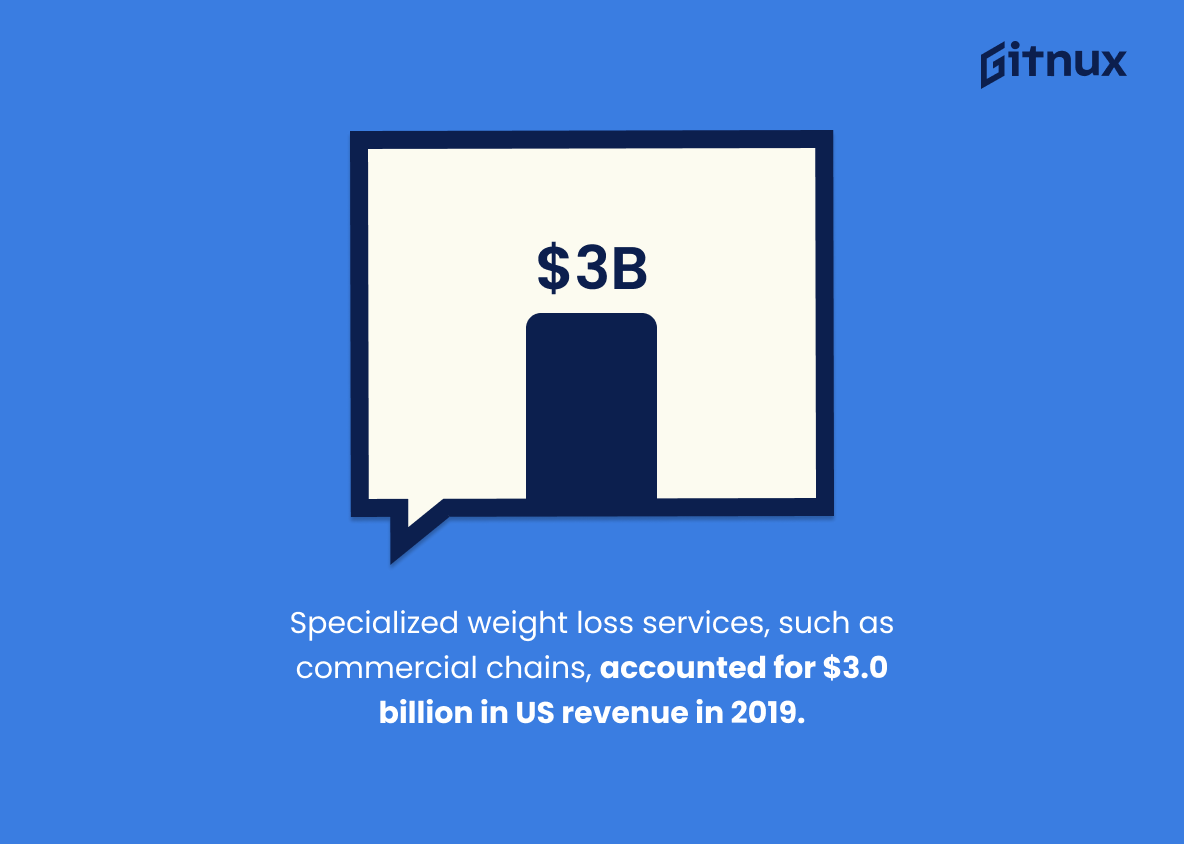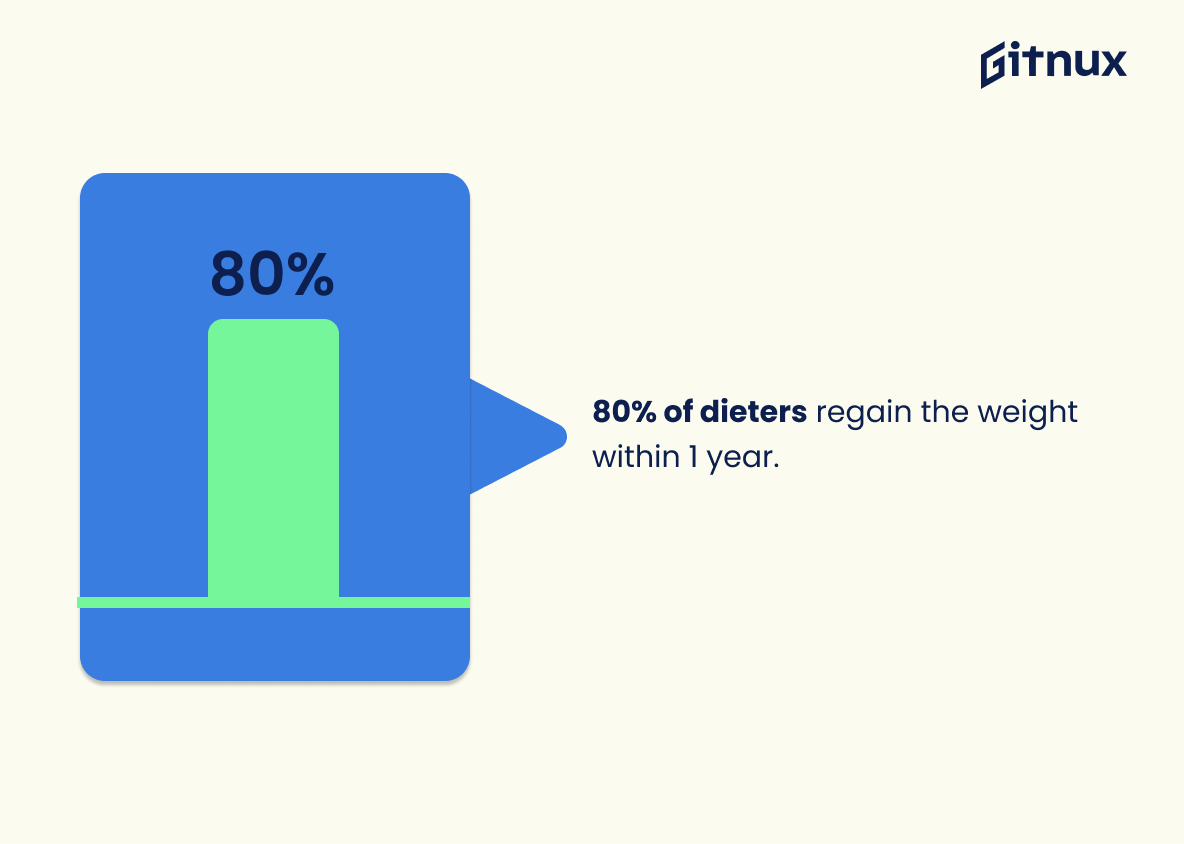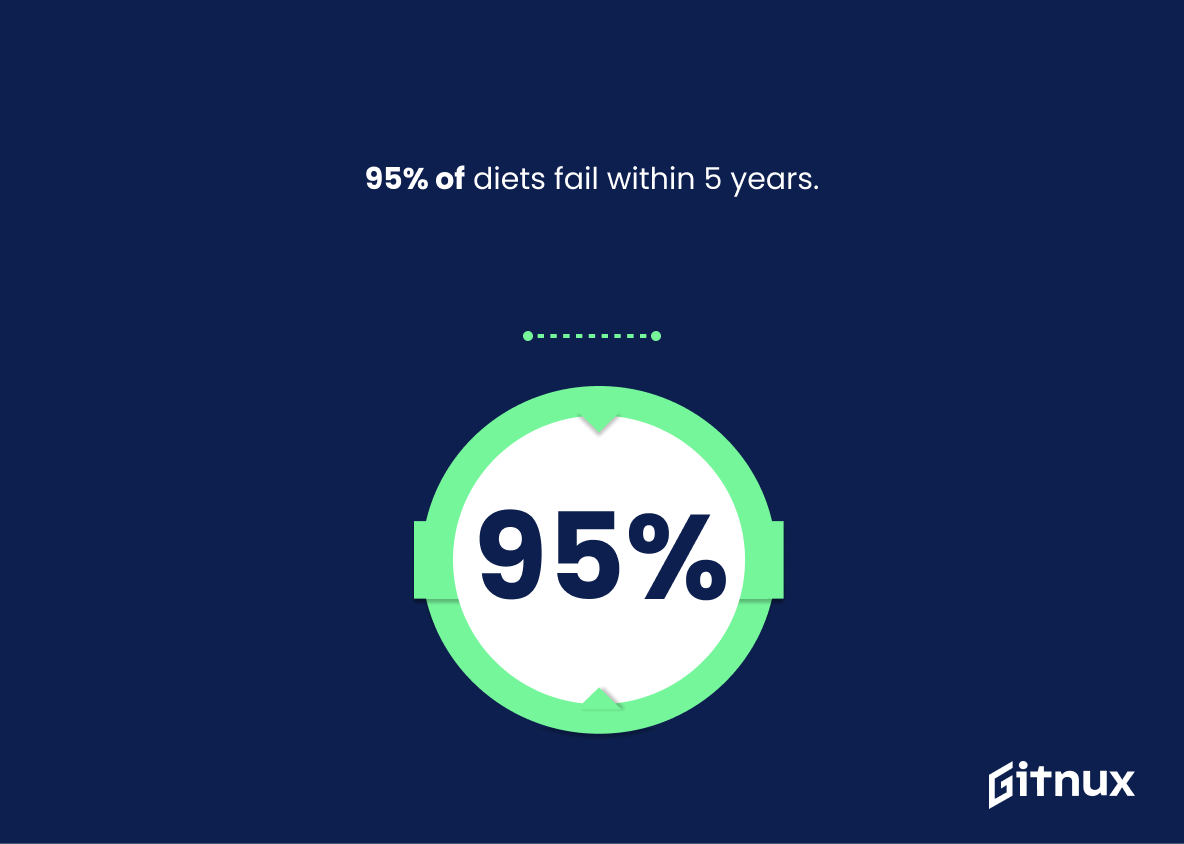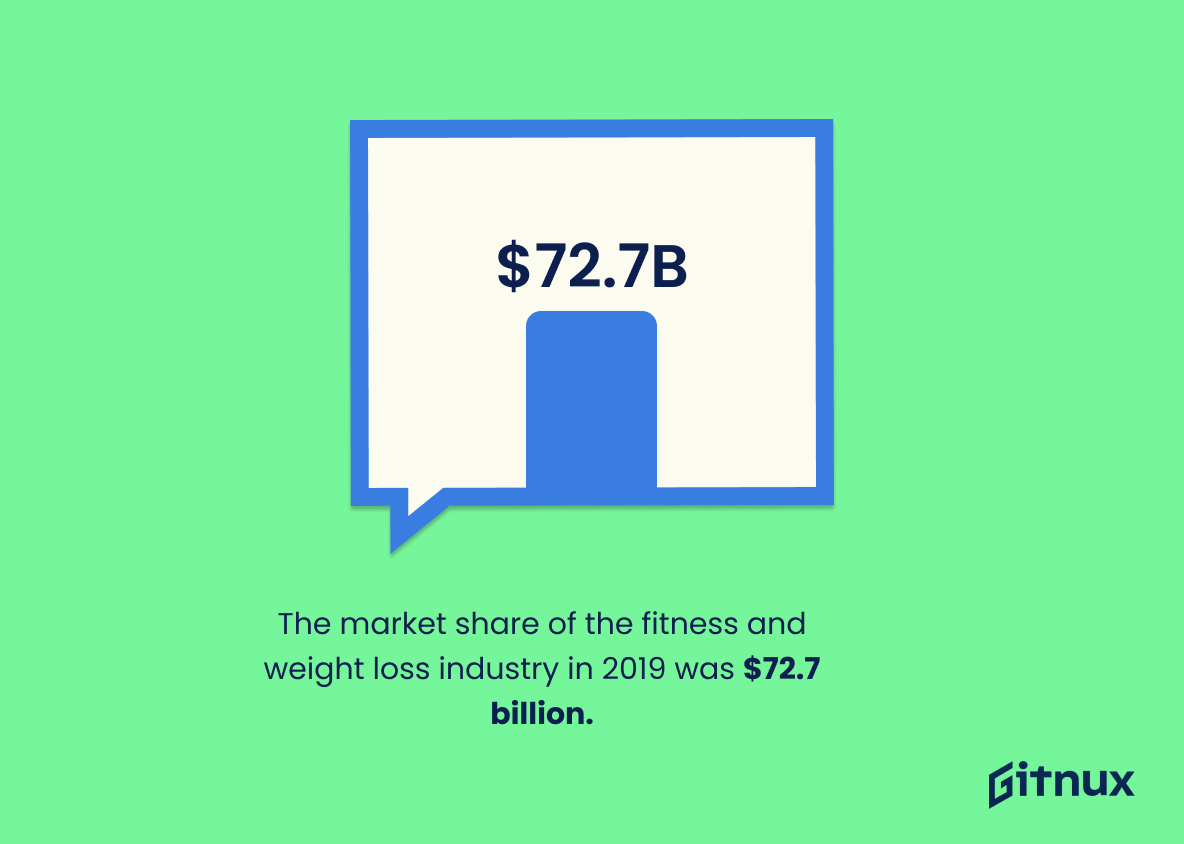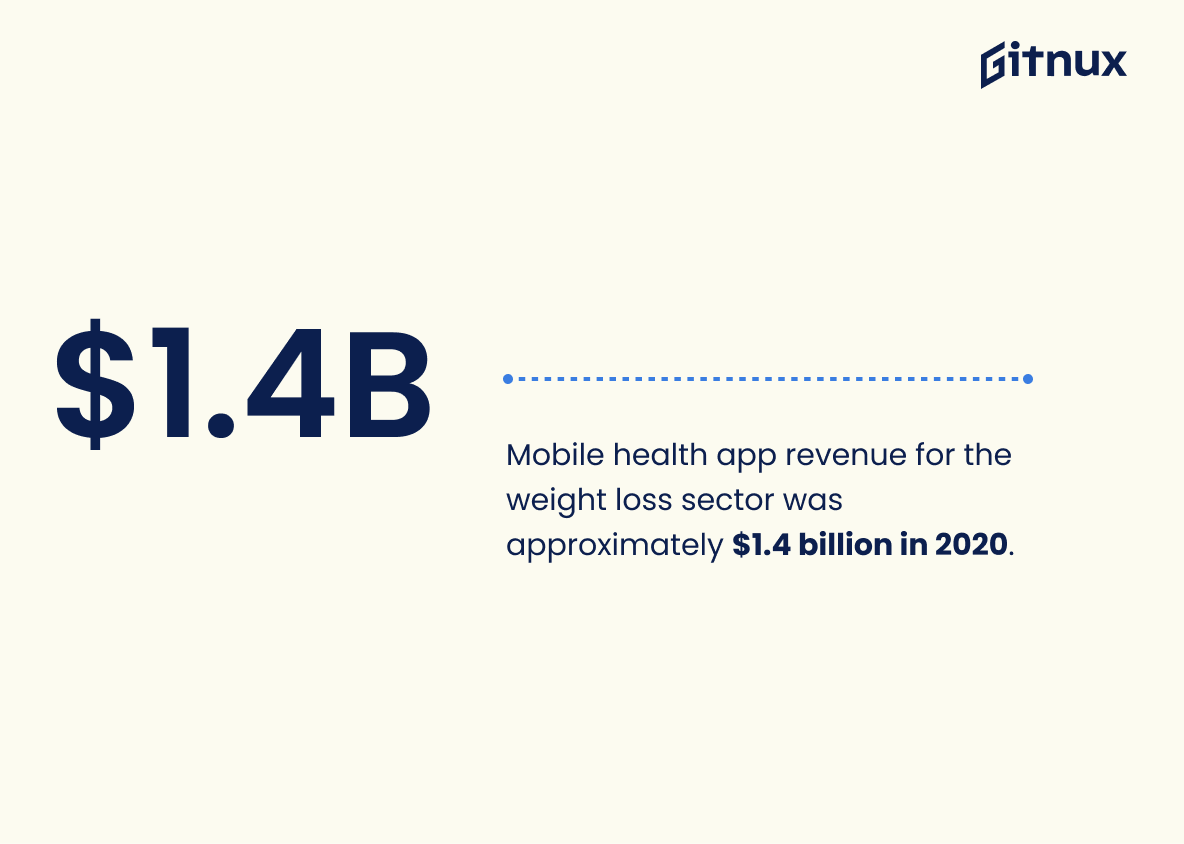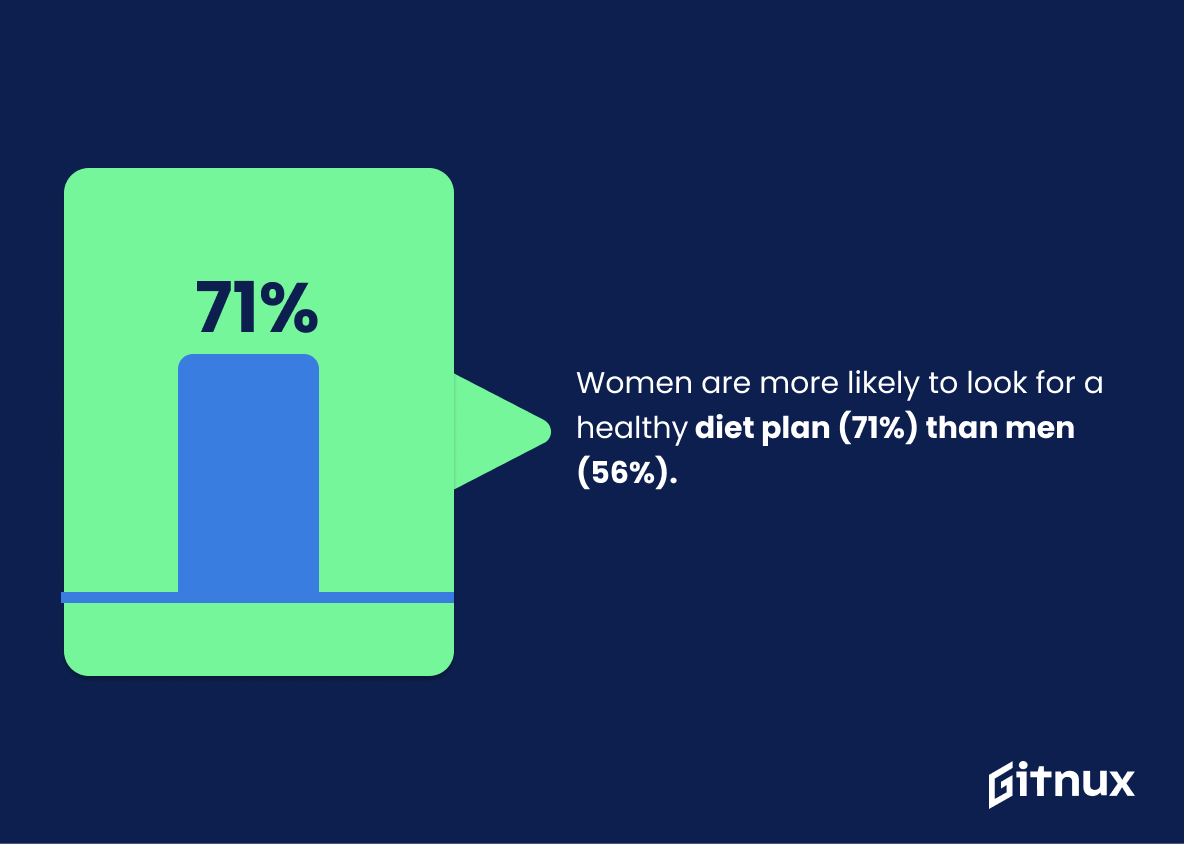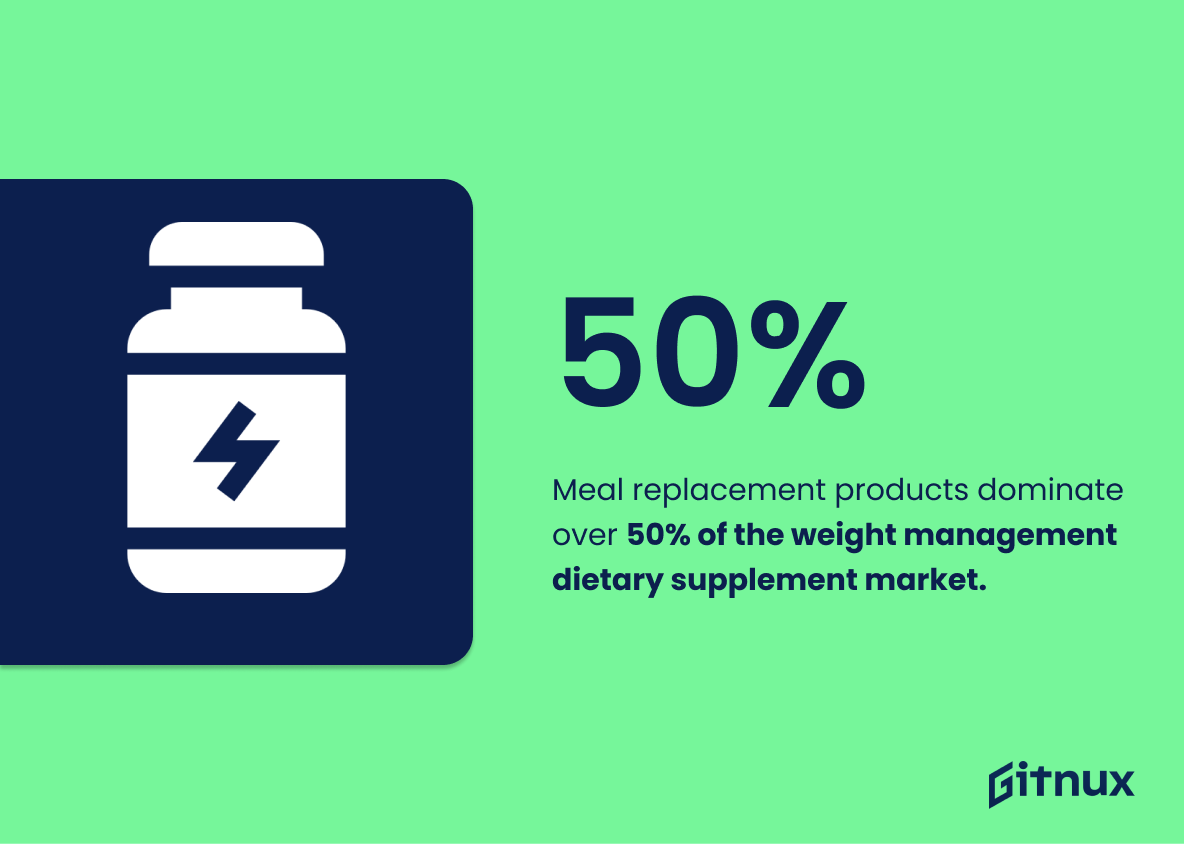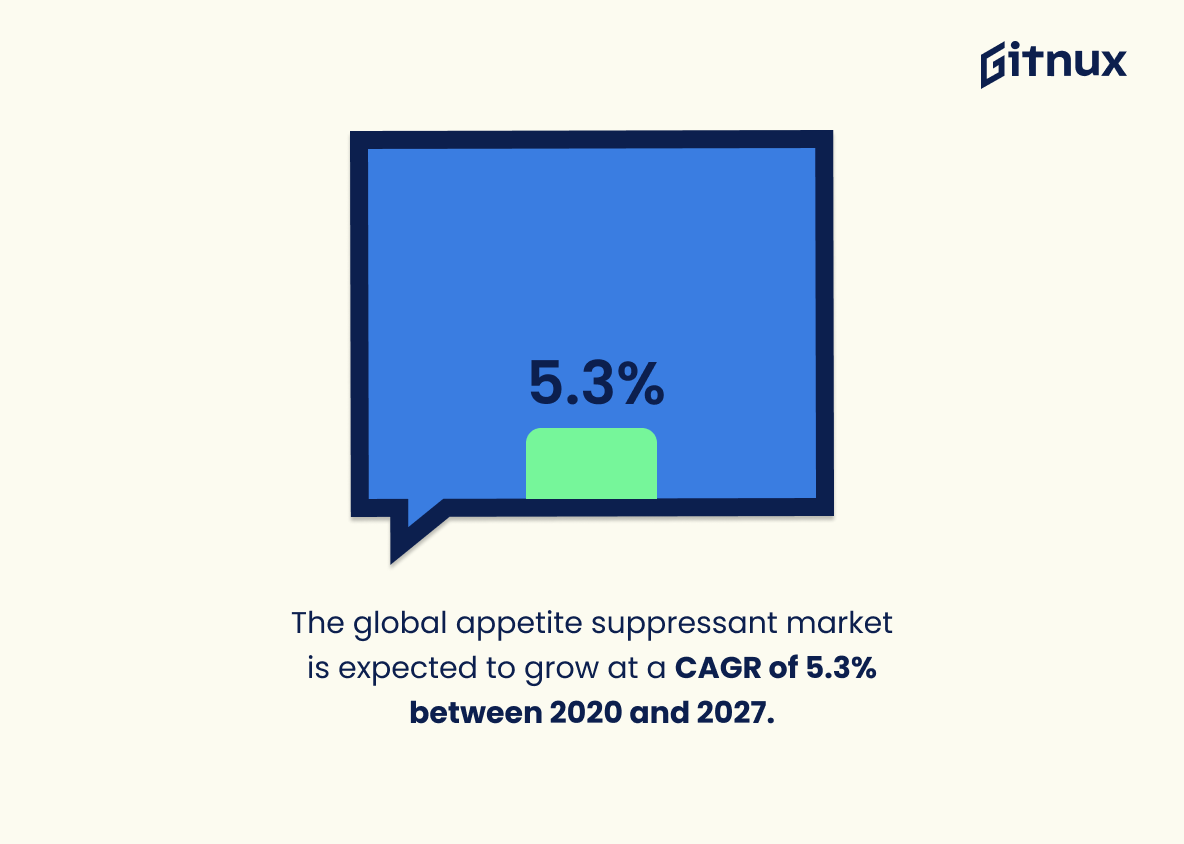The weight loss industry is a booming business, with the global market expected to reach $303.81 billion by 2027 and Americans spending an estimated $33 billion on weight loss products annually. Approximately 45 million Americans go on a diet each year, while 1 in 5 people using weight-loss supplements experience serious health problems. Specialized services such as commercial chains accounted for $3.0 billion in US revenue in 2019, and there are 108 million people currently trying to lose weight across the country – making four attempts per year on average. Unfortunately, 80% of diets fail within one year and 95% fail within five years due to lack of long-term success rates; however this has not stopped 92% women and 75% men from continuing their efforts towards achieving their desired body goals.
In addition to traditional methods like dieting or exercise programs, other sectors have seen growth too: The fitness & wellness industry had a market share of $72.7 billion in 2019; mobile health app revenue for the sector was approximately $1.4billion that same year; wearable technology markets reached 2$19billion by 2021; meal replacement products hold more than 50 percent of dietary supplement shares globally; appetite suppressant markets are growing at CAGR 5 .3%; Weight Loss Surgery Markets will be worth 1$.58 Billion by 2026 ; Adult Obesity rate stands at 42%.4%, resulting higher demand for solutions ,and finally gym memberships hit 62 .5 Million last Year alone .
This statistic is a testament to the immense potential of the weight loss and weight management industry. It shows that the market is growing rapidly and is expected to reach a staggering $303.81 billion by 2027. This is a clear indication that the weight loss industry is a lucrative and profitable sector, and one that is likely to continue to expand in the coming years.
Approximately 45 million Americans go on a diet each year.
This statistic is a testament to the sheer size of the weight loss industry. It shows that millions of Americans are actively trying to lose weight each year, making it a lucrative market for businesses to tap into.
Weight Loss Industry Statistics Overview
Americans spend an estimated $33 billion on weight loss products annually.
This statistic is a testament to the sheer size of the weight loss industry. It speaks to the amount of money that Americans are willing to invest in their health and fitness goals, and the potential for businesses to capitalize on this market. It also highlights the importance of weight loss in the lives of many Americans, and the need for more effective and sustainable solutions.
Specialized weight loss services, such as commercial chains, accounted for $3.0 billion in US revenue in 2019.
This statistic is a testament to the immense size of the weight loss industry in the US. It shows that the demand for specialized weight loss services is high, and that the industry is a lucrative one. This is an important piece of information for anyone interested in the weight loss industry, as it provides insight into the potential for success in the sector.
A total of 108 million people in the United States are on diets.
This statistic is a powerful indicator of the size of the weight loss industry in the United States. It shows that a large portion of the population is actively trying to lose weight, and that the industry is thriving. This statistic is a testament to the importance of weight loss in the lives of many Americans.
80% of dieters regain the weight within 1 year.
This statistic is a stark reminder of the difficulty of maintaining weight loss. It highlights the challenge of sustaining a healthy lifestyle and the need for long-term commitment to achieve lasting results. It also serves as a warning to those considering embarking on a diet, as it demonstrates the importance of having a plan in place to ensure that the weight loss is maintained. This statistic is an important one to consider when discussing the weight loss industry, as it provides insight into the effectiveness of the various products and services available.
95% of diets fail within 5 years.
This statistic is a stark reminder of the difficulty of achieving and maintaining long-term weight loss. It highlights the need for sustainable, healthy lifestyle changes that can be maintained over the long-term, rather than quick-fix diets that are often unsustainable. This statistic is an important reminder of the challenges faced by those looking to lose weight and the need for a comprehensive approach to weight loss.
Dieter demographics in the United States are 92% women and 75% men.
This statistic is significant in the context of Weight Loss Industry Statistics because it highlights the gender disparity in dieting. It suggests that women are more likely to be actively engaged in dieting than men, which could be due to a variety of factors such as cultural expectations, societal pressures, or even biological differences. Understanding this gender gap can help inform strategies for targeting different audiences in the weight loss industry.
The market share of the fitness and weight loss industry in 2019 was $72.7 billion.
This statistic is a testament to the sheer size and scope of the weight loss industry. It’s a clear indication that the industry is booming and that there is a huge demand for weight loss products and services. It also shows that the industry is highly profitable, which means that there are plenty of opportunities for entrepreneurs and businesses to capitalize on. This statistic is an important piece of information for anyone looking to gain insight into the weight loss industry.
Mobile health app revenue for the weight loss sector was approximately $1.4 billion in 2020.
This statistic is a testament to the immense potential of the weight loss sector in terms of mobile health app revenue. It highlights the fact that the weight loss industry is a lucrative market, and that there is a great opportunity for businesses to capitalize on this trend. Furthermore, it serves as a reminder that the weight loss industry is an ever-evolving sector, and that staying up-to-date with the latest trends and developments is essential for success.
Women are more likely to look for a healthy diet plan (71%) than men (56%).
This statistic is a telling indication of the gender divide in the weight loss industry. It suggests that women are more likely to prioritize their health when it comes to dieting, while men may be more likely to focus on the aesthetic benefits of weight loss. This could be a useful insight for marketers in the weight loss industry, as it could help them tailor their messaging to better reach their target audiences.
Over 2 billion people worldwide are overweight or obese.
This statistic is a stark reminder of the sheer magnitude of the weight loss industry. It highlights the sheer number of people who are struggling with their weight and are in need of assistance. It also serves as a reminder of the importance of the weight loss industry in helping people to achieve their health and fitness goals.
Meal replacement products hold more than 50% of the dietary supplement market share in the weight management industry.
This statistic is a testament to the power of meal replacement products in the weight management industry. It shows that these products are a major player in the dietary supplement market, and are a popular choice for those looking to lose weight. This highlights the importance of meal replacement products in the weight loss industry, and provides valuable insight into the preferences of consumers.
The global appetite suppressant market is expected to grow at a CAGR of 5.3% between 2020 and 2027.
This statistic is a key indicator of the potential growth of the weight loss industry in the coming years. It suggests that the appetite suppressant market is likely to experience a steady increase in demand, which could lead to more opportunities for businesses in the weight loss industry. This could mean more products, services, and innovations that could help people achieve their weight loss goals.
The adult obesity rate in the United States is 42.4%, resulting in higher demand for weight loss solutions.
This statistic is a stark reminder of the prevalence of obesity in the United States, and the need for weight loss solutions. It highlights the importance of the weight loss industry, and the potential for growth in the sector. It also serves as a call to action for those looking to improve their health and wellbeing.
Conclusion
The weight loss industry is a booming market, with the global weight loss and weight management market expected to reach $303.81 billion by 2027. Approximately 45 million Americans go on diets each year, spending an estimated $33 billion annually on products related to their efforts. Unfortunately, 1 in 5 people using these supplements experience serious health problems as a result of their use. Specialized services such as commercial chains accounted for $3 billion in US revenue in 2019 alone while 108 million people are currently dieting across the country – making four attempts per year on average – though 80% regain the lost weight within one year and 95% fail within five years.
Dieters tend to be predominantly female (92%) but men also make up 75%, indicating that both genders are actively seeking out solutions for successful long-term results when it comes to losing or managing their weights safely and effectively. The fitness and wellness industry had a total value of over 72$billion dollars last year while mobile health apps earned approximately 1$billion from this sector alone; wearable technology markets will reach 2$billion by 2021 too. Women appear more likely than men (71% vs 56%) to look into healthy diet plans which may explain why there has been an increase in demand for meal replacement products holding 50+ percent of dietary supplement shares worldwide today – not forgetting appetite suppressants whose global market share is projected at 5%. Weight loss surgery options have seen growth too with its current worth standing at around 158$million USD; all this despite adult obesity rates being 42%. Finally gym memberships reached 62$.5million users just last year showing how much effort individuals put into achieving healthier lifestyles through exercise regimes alongside other methods mentioned above.
References
0. – https://www.vizologi.com
1. – https://www.pubmed.ncbi.nlm.nih.gov
2. – https://www.cdc.gov
3. – https://www.marketsandmarkets.com
4. – https://www.worldobesity.org
5. – https://www.onepoll.com
6. – https://www.statista.com
7. – https://www.askmen.com
8. – https://www.globenewswire.com
9. – https://www.ncbi.nlm.nih.gov
10. – https://www.datamintelligence.com
11. – https://www.bostonmedicalcenter.org
12. – https://www.medicinenet.com

